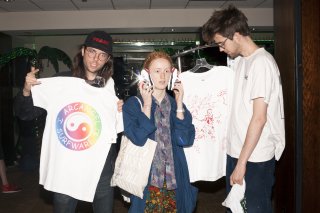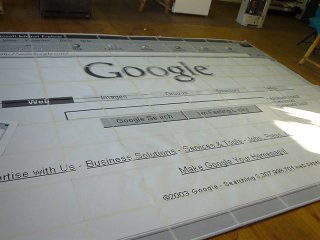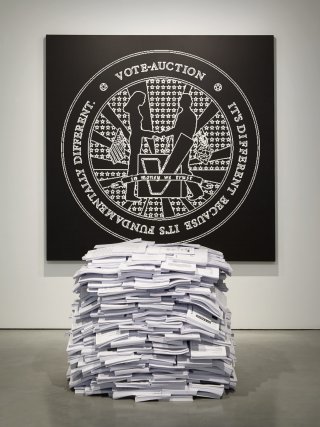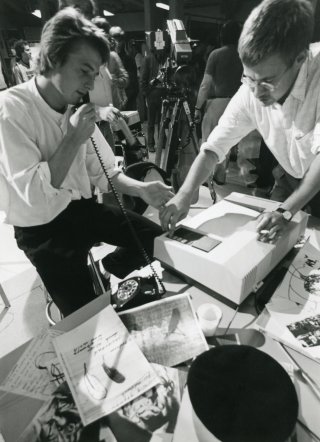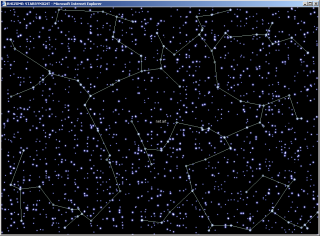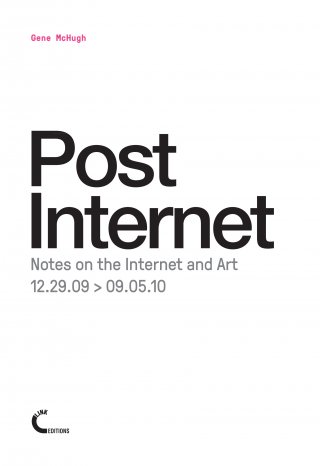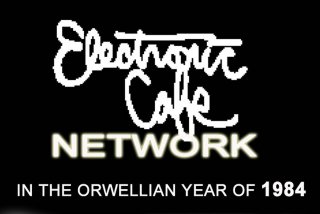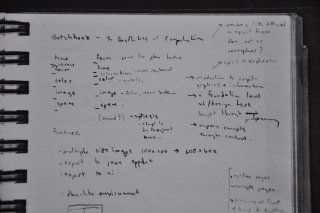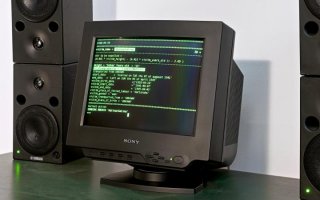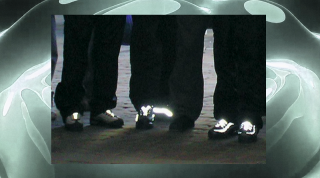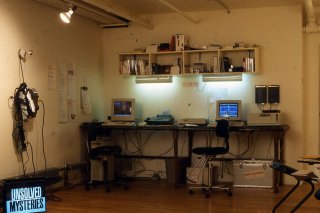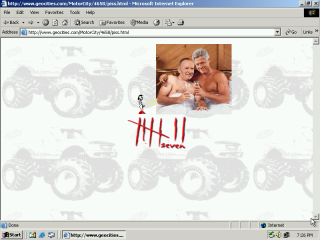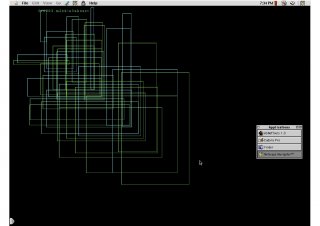386 DX
Alexei Shulgin
1998 - 2013
Created by Russian artist Alexei Shulgin, 386 DX was “the world’s first cyberpunk band.” Known for its live performances on city streets and in nightclubs, the performer is a dingy, singing PC that runs Windows 3.1, equipped with a vintage sound card and loaded with MIDI files of drums, guitar, and synth and accompanying lyrics.
Its live performances (it only plays covers, ranging from “California Dreaming” by the Mamas and the Papas to Nirvana’s “Smells Like Teen Spirit”) are accompanied by colorful digital graphics reminiscent of early 1990s screensavers.
386 DX live in New York City, January 31, 2019
“Listen, the miserable computer can’t carry a tune.”
— Alexei Shulgin
Visit 386 DX
as part of “The Art Happens Here: Net Art’s Archival Poetics” at the New Museum through May 26, 2019.
Shulgin began the project out of frustration with a growing reliance among net artists on new, fashionable technologies. In response, he set out to invent a new kind of street performance—a sort of organ grinder, powered by cheap, readily available technology.
 Alexei Shulgin, 386 DX (1998–2013), performing in the streets of Graz, Austria, 2000. Photograph: Lupo Wolf.
Alexei Shulgin, 386 DX (1998–2013), performing in the streets of Graz, Austria, 2000. Photograph: Lupo Wolf.
With its rudimentary text-to-speech capabilities, 386 DX sings classic pop songs from lyric sheets saved as plain text.
Often, these are accompanied by synthesized songs generated from MIDI files. These files contain musical notation rather than recorded sound, allowing for very small file sizes that can be easily downloaded over slow networks. The creation and sharing of MIDI files was an important part of digital folk culture on the early web.
The MIDI files are played back using the synthesizer built into any given computer’s sound card. 386 DX uses the Creative Soundblaster card, which was a breakthrough in making 16-bit audio accessible to users.
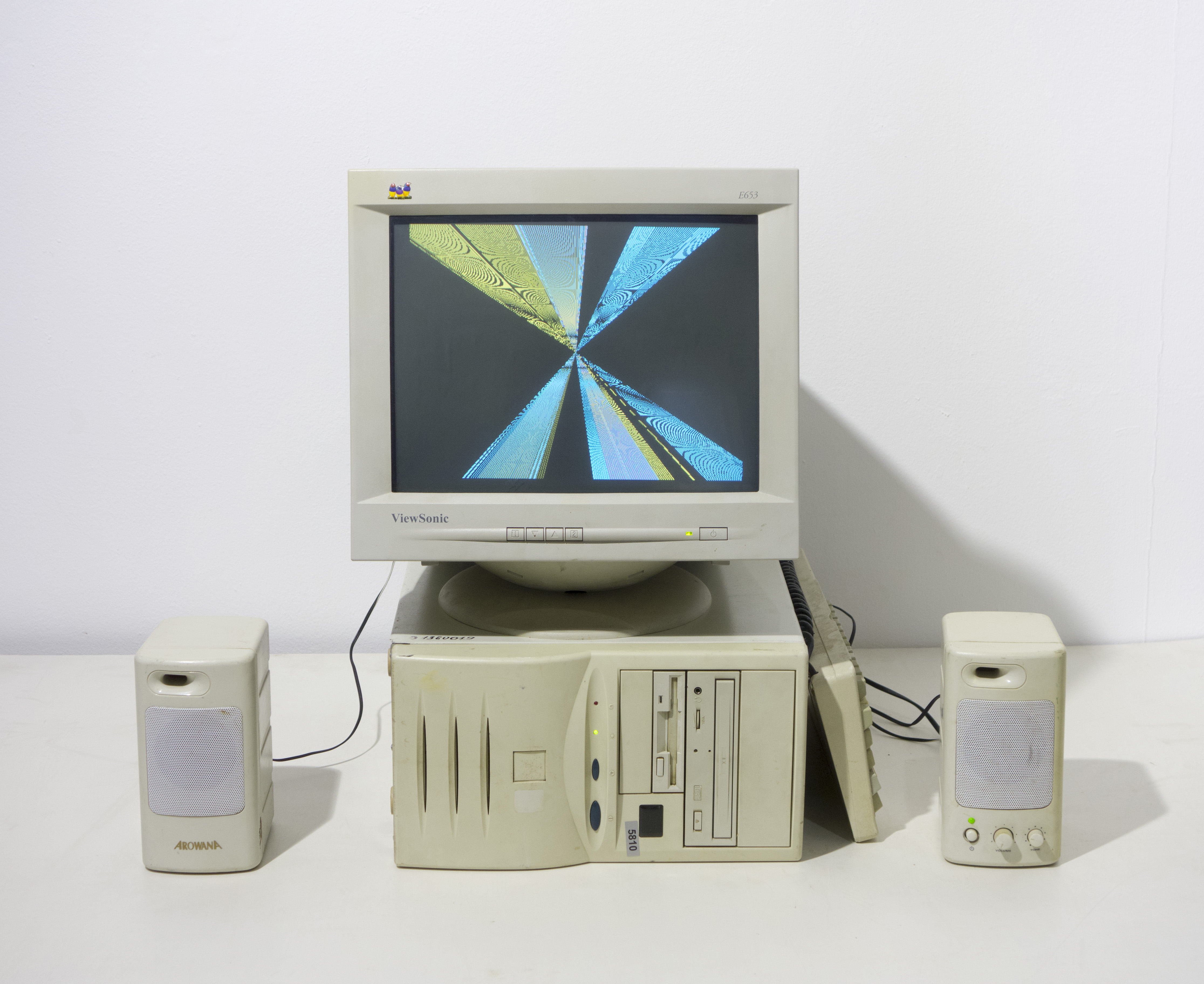 Alexei Shulgin, 386 DX (1998–2013). Photograph by Alexei Shulgin.
Alexei Shulgin, 386 DX (1998–2013). Photograph by Alexei Shulgin.
By the time 386 DX was formed, its once-groundbreaking sound card was already dated, giving its performances a sense of pathos.
Keeping the synthesized music and lyrics in sync stretches the capabilities of the 386 DX system. Lyrics and music sometimes misalign, and other glitches may arise, making each performance unique.
Read Armin Medosch's "386 DX: The World's First Cyberpunk Band" at Rhizome.
In 386 DX’s_ fifteen-year existence, the band has played at clubs in Moscow, venues in Tokyo, and at the Musée d’Art Moderne in Paris.

However, performing in public space—busking, rather—has also been an important part of the project. 386 DX has been sighted at the US-Mexican border in Tijuana, on a street corner in Malmö, Sweden, and at the 2nd Avenue subway station in New York.
The band’s conceit questions the line between computer and user in digital production and performance. In the liner notes of The Best of 386 DX, Shulgin is identified as the band’s “operator,” making the computer the de facto frontperson.
“As the evening progresses and may be enhanced by one or a few alcoholic drinks, it can lead to very emotional results, including cheerfulness, melancholy, and exuberance.” — Armin Medosch
386 DX made a public comeback in the 2nd Avenue subway station and at the New Museum on January 31, 2019.
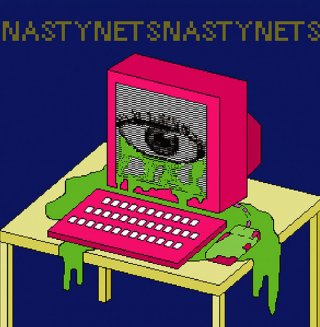 Nasty Nets
JOHN MICHAEL BOLING, JOEL HOLMBERG, GUTHRIE LONERGAN, MARISA OLSON, ET AL
2006
- 2012
Nasty Nets
JOHN MICHAEL BOLING, JOEL HOLMBERG, GUTHRIE LONERGAN, MARISA OLSON, ET AL
2006
- 2012

